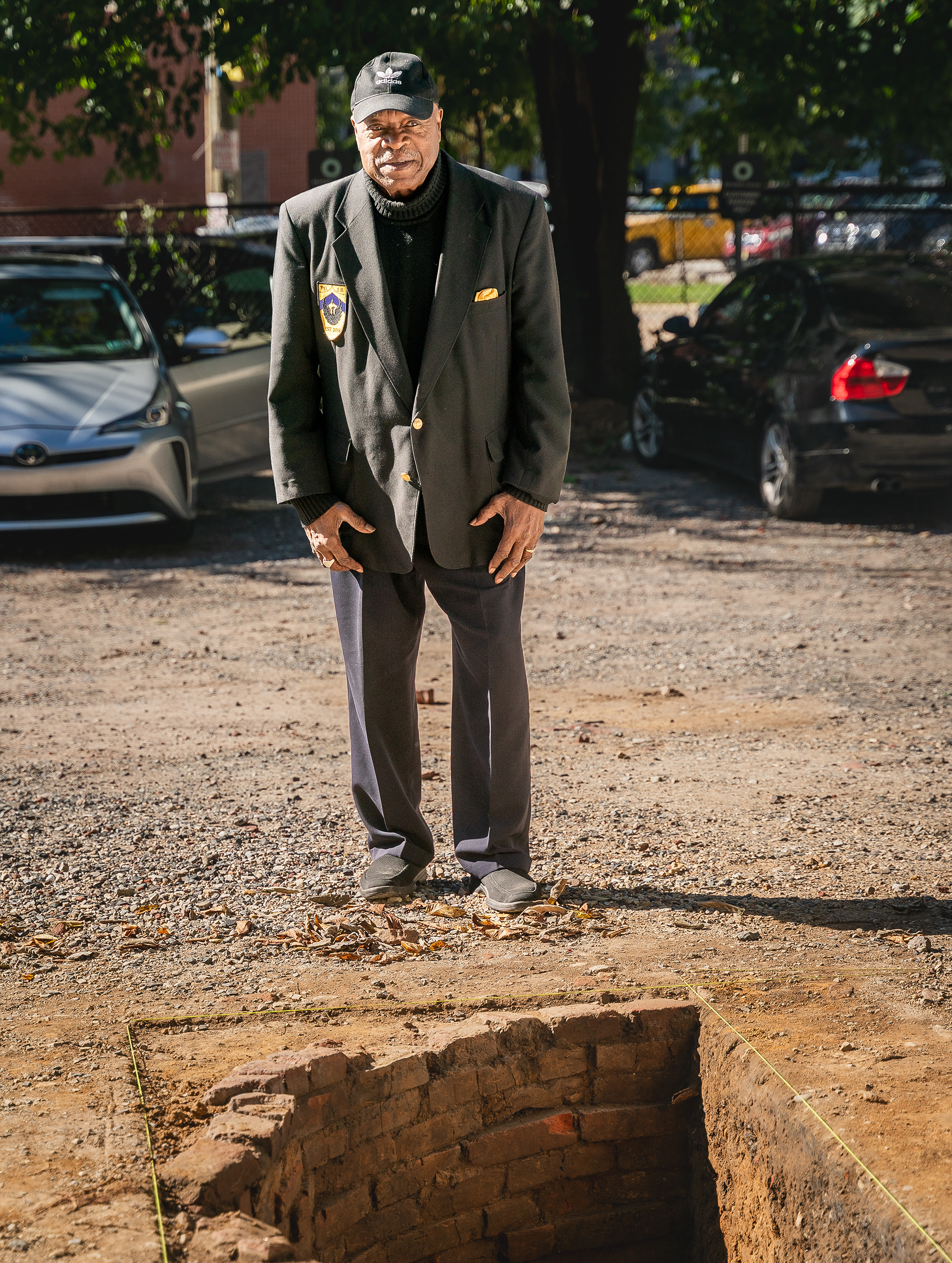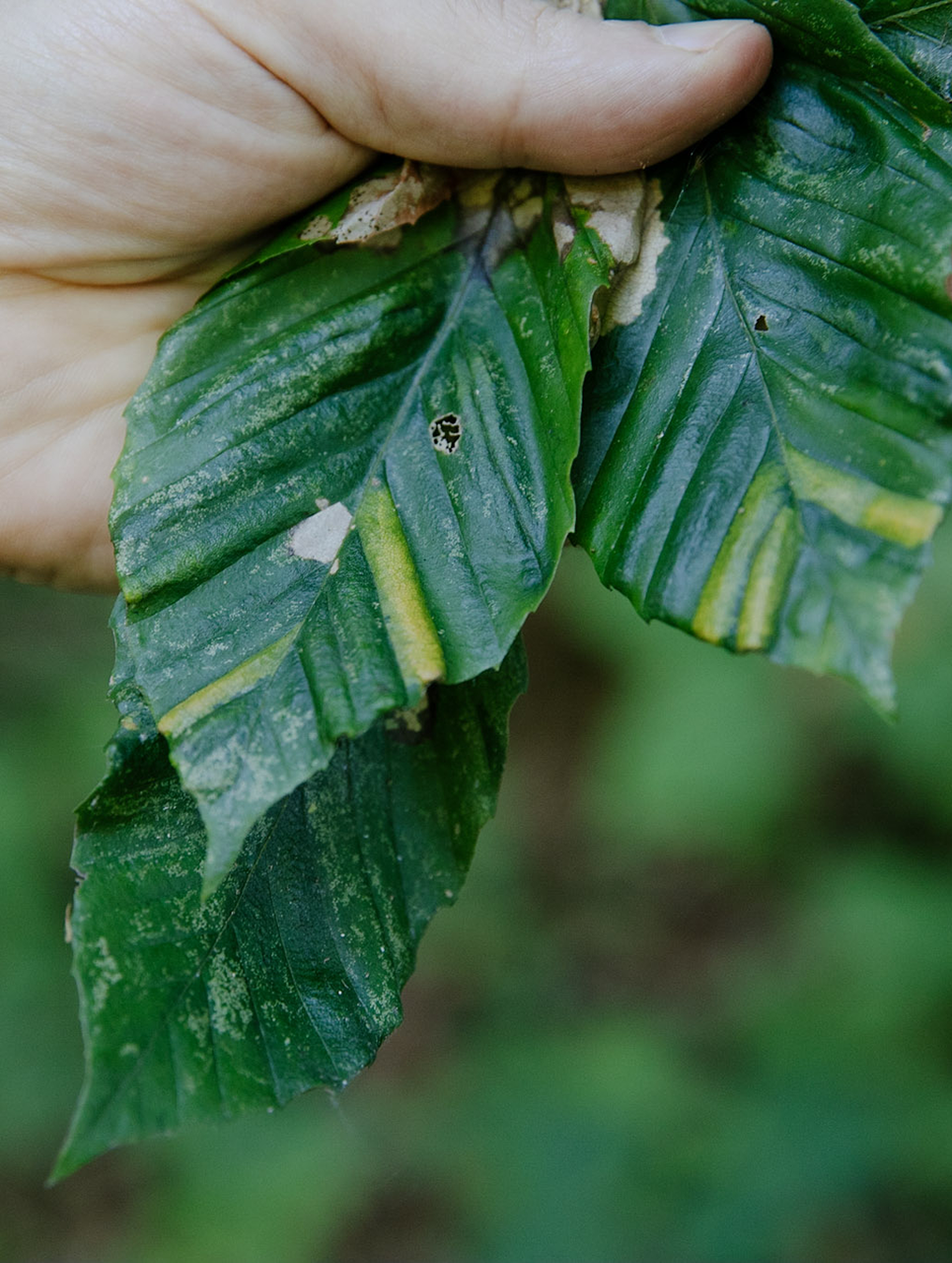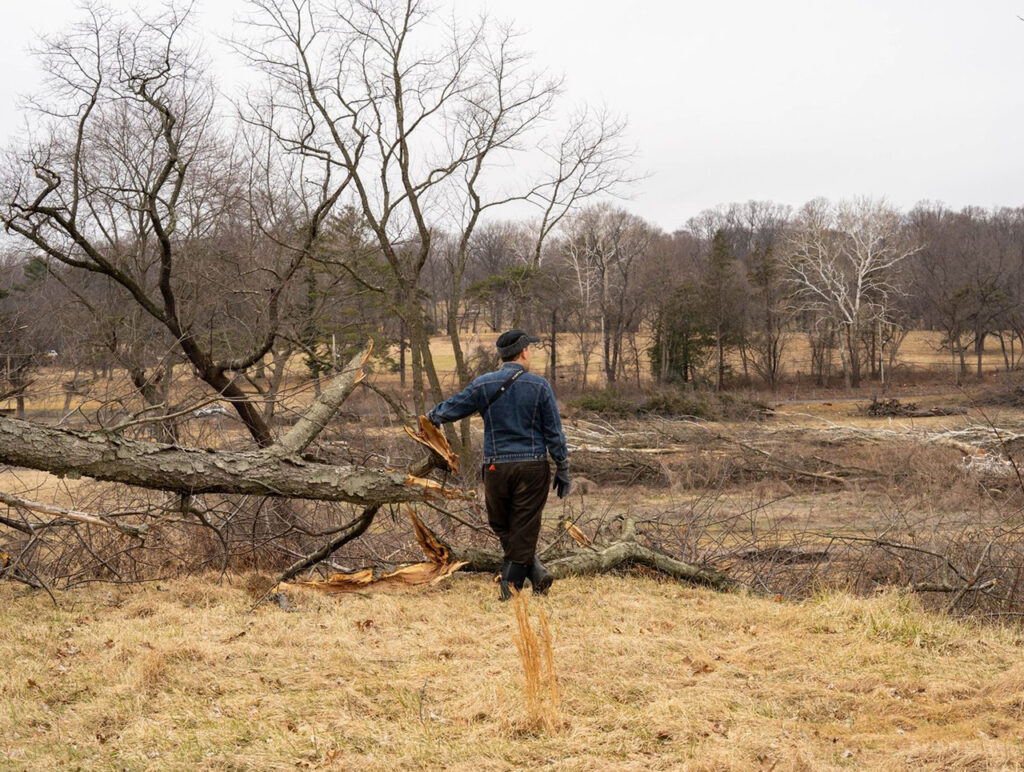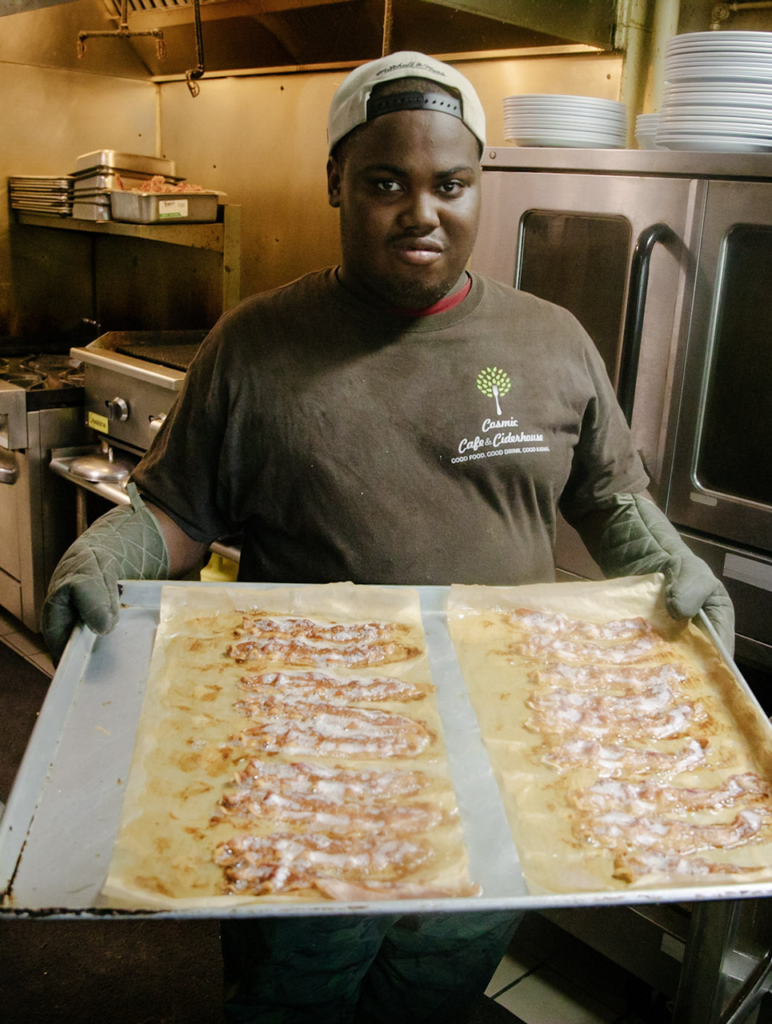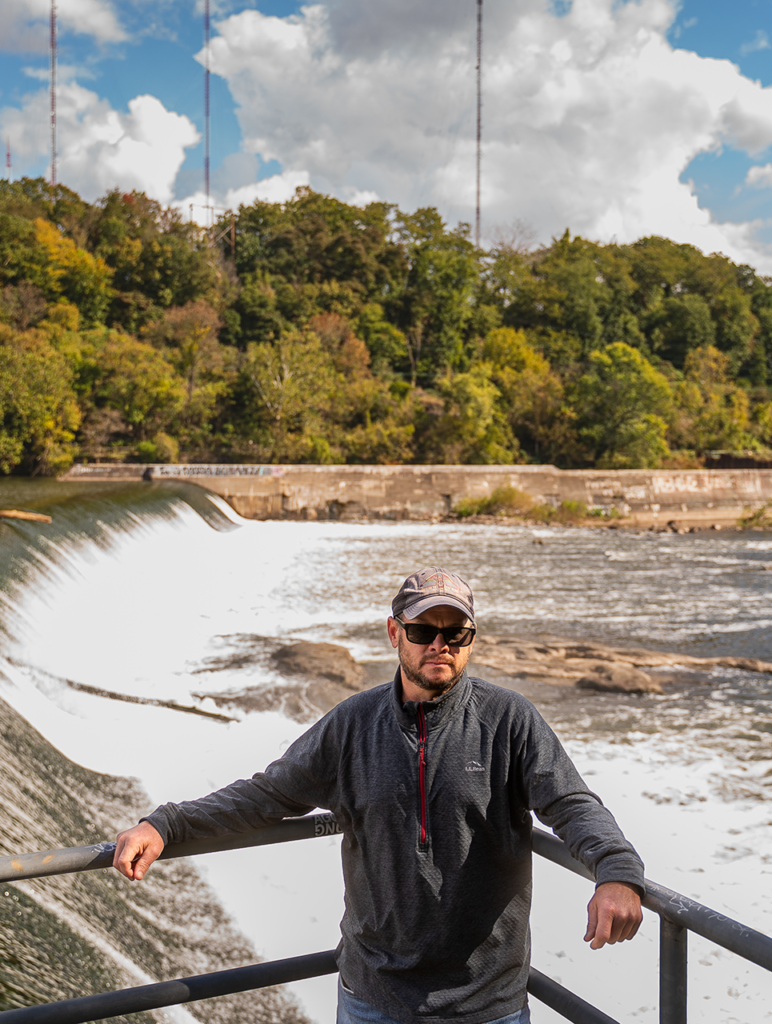The small light-brown button excavated in broiling August heat rests in the palm of Megan C. Kassabaum, Ph.D., associate professor of anthropology at the University of Pennsylvania and Weingarten Associate Curator for North America at the Penn Museum. Dug up from one of three small sites in the parking lot behind the Community Education Center (CEC) at 3500 Lancaster Avenue, the button, made of bone, probably from the early twentieth century, could have belonged to Stonewall or Mary Jones. The Joneses, born in Virginia in the 1880s, archival records say, reared four children in a wooden house at 32 North 35th Street, once part of West Philly’s Black Bottom — a neighborhood that stretched from 33rd to 40th streets and from Lancaster to University avenues.
Then again, the button might have fallen off one of the jazzy dresses of a woman nicknamed “Buttons and Bows” by residents of the Black Bottom, according to Walter Palmer, a lawyer and adjunct professor at Penn’s Graduate School of Social Policy and Practice who also grew up in the Black Bottom.
“Her real name was Laura Walker,” Palmer says of “Buttons and Bows.” “She dressed up every day, especially on Sundays, and walked with a straight back and switching hips. The Black Bottom had its share of characters.”
Palmer grew up in two rooms at 3625 Market Street with his mother, father and eleven siblings. Palmer’s mother, a seamstress, could have lost such a button.
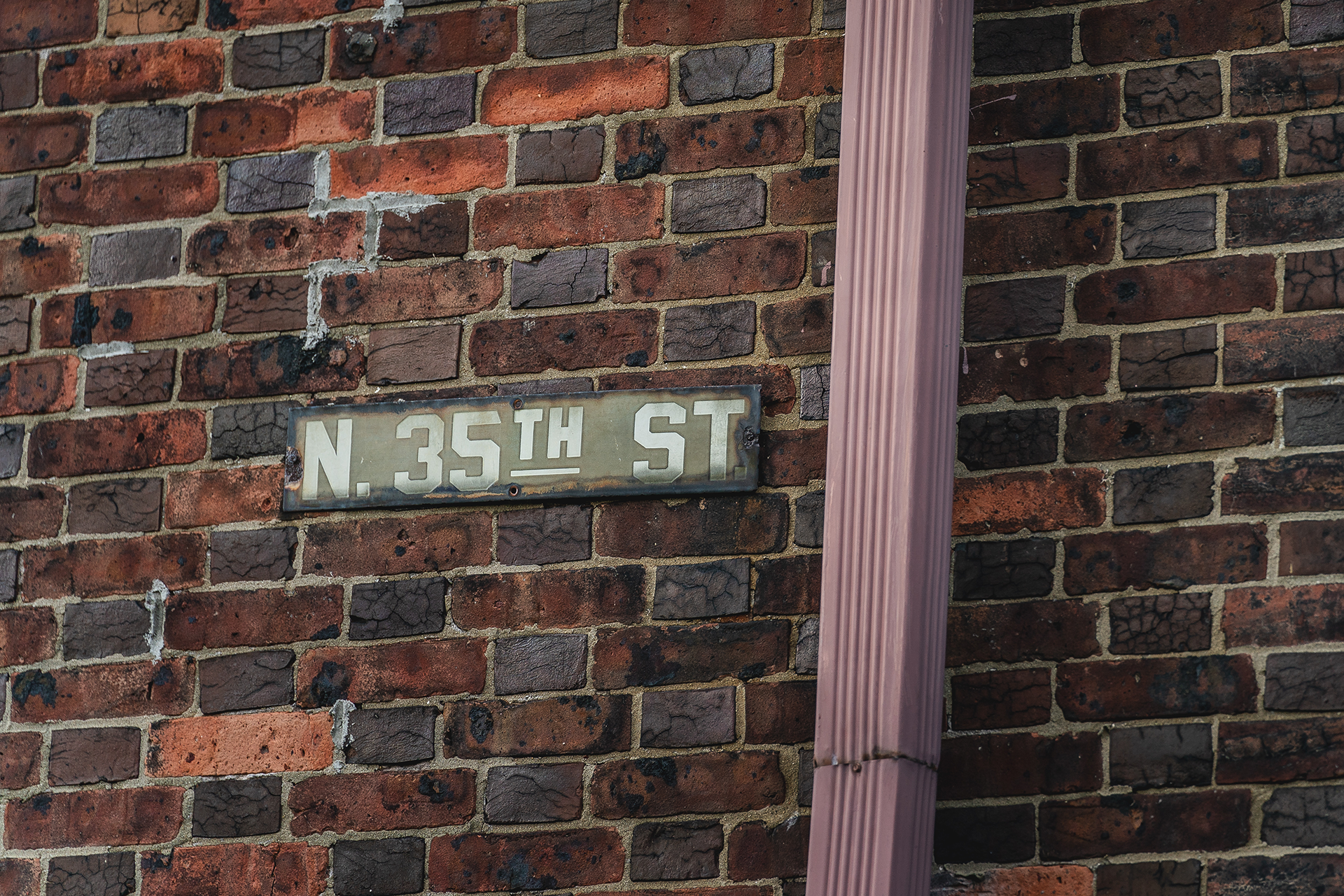
Thanks to the button, a 1927 penny, shards of glass and other objects recovered during Heritage West: West Philadelphia Community Archaeological Project, the Joneses, “Buttons and Bows,” and other residents of the old Black Bottom come to life beyond the ink and paper of census entries, insurance records and other documents. Objects found as the excavation continues may also help call into question the label of “slum,” slapped on the area by the developer, West Philadelphia Corporation (WPC). The “higher eds and meds” — including Penn, Drexel, Presbyterian Hospital and other institutions — formed the WPC to clear out Black residents and build University City, according to West Philadelphia Collaborative History, whose website provides resources on the history of West Philadelphia in the 20th and 21st centuries.
The excavated items, small though they are, not only establish details of the daily life buried when bulldozers rolled in, but also acknowledge the violence of the community’s destruction, the project’s website says. “… Heritage West recognizes the need to start the process of righting the wrongs done to the Black Bottom …”
Partners on the project include HopePHL, the Black Bottom Tribe, University City Arts League, Penn, the Penn Museum and the CEC. The team has consulted the community from the early stages in 2020, says Kassabaum, head archaeologist of Heritage West. Community members have even wielded shovels during the Black Bottom’s excavation.
The term “bottom” often referred to low-lying land, but was also used in many parts of the U.S. to refer to areas with a high proportion of Black residents, according to landscape architect Ujijji Davis Williams of Detroit in her essay, “The Bottom: The Emergence and Erasure of Black American Urban Landscapes,” in the Avery Review. Black Bottoms across the country gave their residents a solid start. America’s first Black doctors, lawyers, teachers, small manufacturers and others scrambling to make something of themselves and their communities grew up there, Williams writes. The bottoms in places like Chicago and Harlem also nurtured the arts, becoming the birthplaces of soul, blues and ground-breaking literary works.
African Americans arrived in Philly’s Black Bottom as early as 1861, according to Palmer. The number swelled after the Civil War, he says. The area’s population jumped in the first decades of the Great Migration from 1910 into the 1930s, according to Kassabaum.
Palmer recalls the vitality of Philly’s Black Bottom.
“It was a vibrant community of working-class and middle-class people,” he says. “Elders involved themselves in keeping some sanity, some peace. People often left their doors and windows open. When Joe Lewis was fighting, my father would put the radio on the porch banister so everyone could hear it.” Even the number writers, who ran illegal gambling operations, had Palmer’s respect because they were generous, buying turkeys and coal for poor families at Christmas.
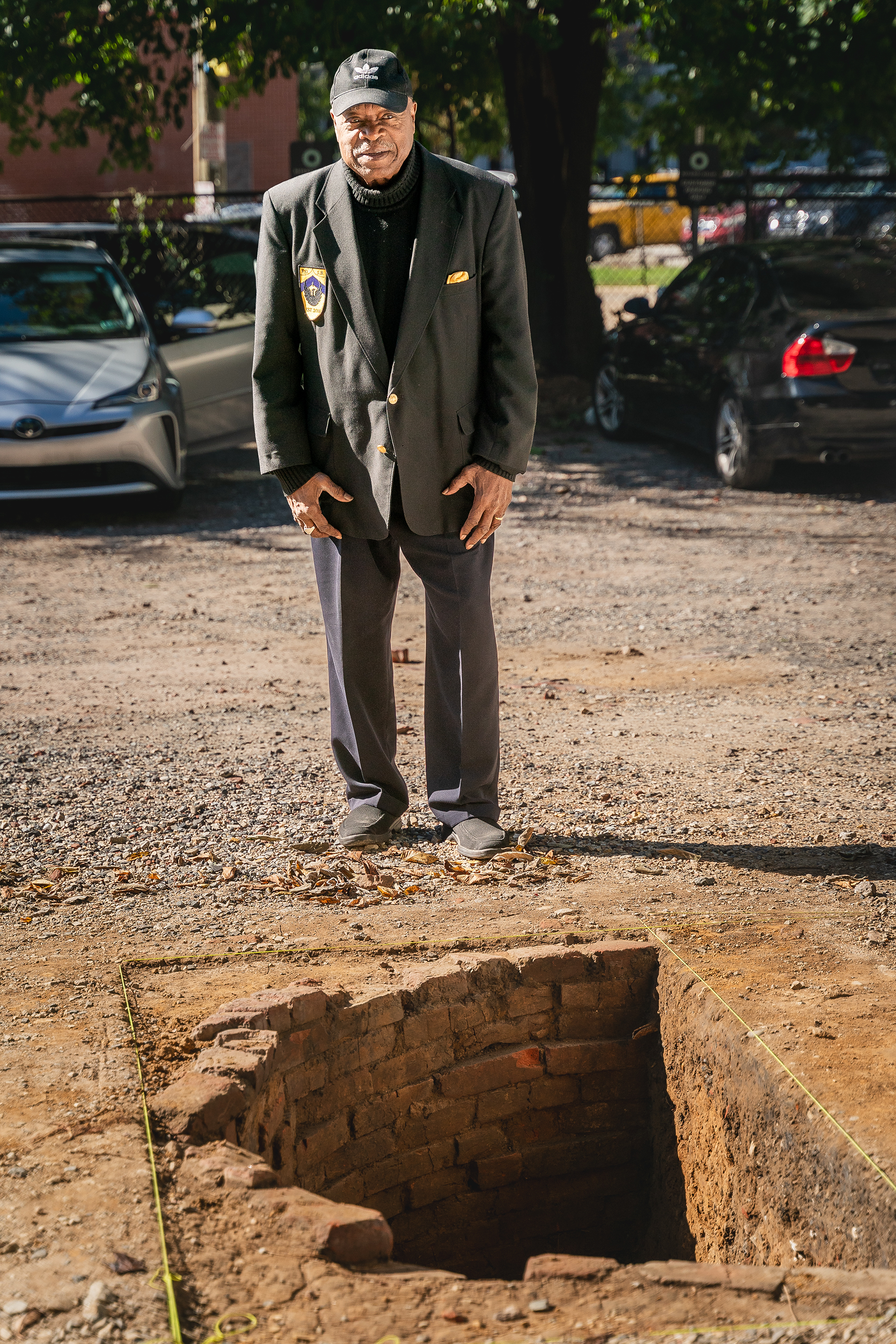
Former Black Bottom resident Aaron Wise recalls a tight-knit neighborhood.
“You knew everyone’s family here,” he says. “The [area] was a hub … where Black people owned their own businesses. You could see Dizzy Gillespie and Ella Fitzgerald at the clubs here.”
Trouble began when Penn made plans to grow. In 1950, Penn, Drexel and Presbyterian Hospital began looking to expand, according to Palmer. Penn used several strategies to gain a foothold in the Black Bottom, he says. The university bought up buildings and let them deteriorate and used eminent domain and cash to acquire some properties.
When Penn needed legal leverage to raze the area, it turned to City Council, says John L. Puckett, a professor emeritus of education at Penn and a member of West Philadelphia Collaborative History. Penn had “ … no legal writ for urban renewal in the Market Street corridor,” Puckett writes, so the Philadelphia Redevelopment Authority, an agency which “focuses on the city’s redevelopment while creating balanced mixed-use communities,” its website says, created Unit 3, a renewal zone that went from Powelton and Lancaster avenues south to Chestnut Street between 34th and 40th streets. The zone, which included much of the Black Bottom, was declared “blighted,” setting it up for demolition.
People were crying as they watched their community being destroyed. When you take a neighborhood down, you don’t just take down brick and mortar. You lose security, safety, the continuity of life. It was criminal.”
— Walter Palmer, lawyer, University of Pennsylvania professor and former Black Bottom resident
Since Palmer had gained prominence in the Black Power Movement in the 1960s, Black Bottom residents looked to him to organize resistance to the area’s destruction, he says. He brought in leaders from the Student Nonviolent Coordinating Committee and the Congress on Racial Equality as allies in the fight.
The resistance went beyond talk.
“I put barbed wire across 40th Street so cars couldn’t pass,” Palmer says. “We overturned and fire-bombed a few cars. Hit and run. Guerilla warfare.”
Nevertheless, by the late 1960s, bulldozers had reduced the Black Bottom to rubble. Palmer and several other sources estimate that the number of people displaced was 3,000 to 5,000.
“People were crying as they watched their community being destroyed,” Palmer says. “When you take a neighborhood down, you don’t just take down brick and mortar. You lose security, safety, the continuity of life. It was criminal.” A mural representing the scene was on the wall of University City High School, a structure now itself demolished.
Such obliteration fits a national pattern, according to the Heritage West website. Under the guise of urban renewal, city planning departments targeted Black Bottoms as prime locations for redevelopment. That stance destroyed many Black communities.
‘A time capsule’
The parking lot behind the CEC proved an ideal site to excavate and retrieve buried bits of the Black Bottom. The CEC still stands, but many of the other structures were lost, Kassabaum says.
“The parking lot is one of the least disturbed sites in the Black Bottom where development has not yet happened,” says Sarah Linn, Ph.D., Penn Museum research liaison and a member of the archaeological team. “An old Quaker meeting house was built on this site in the 1840s. Then the CEC was built in 1901. There were also two wooden houses and three brick houses here, according to insurance records.”
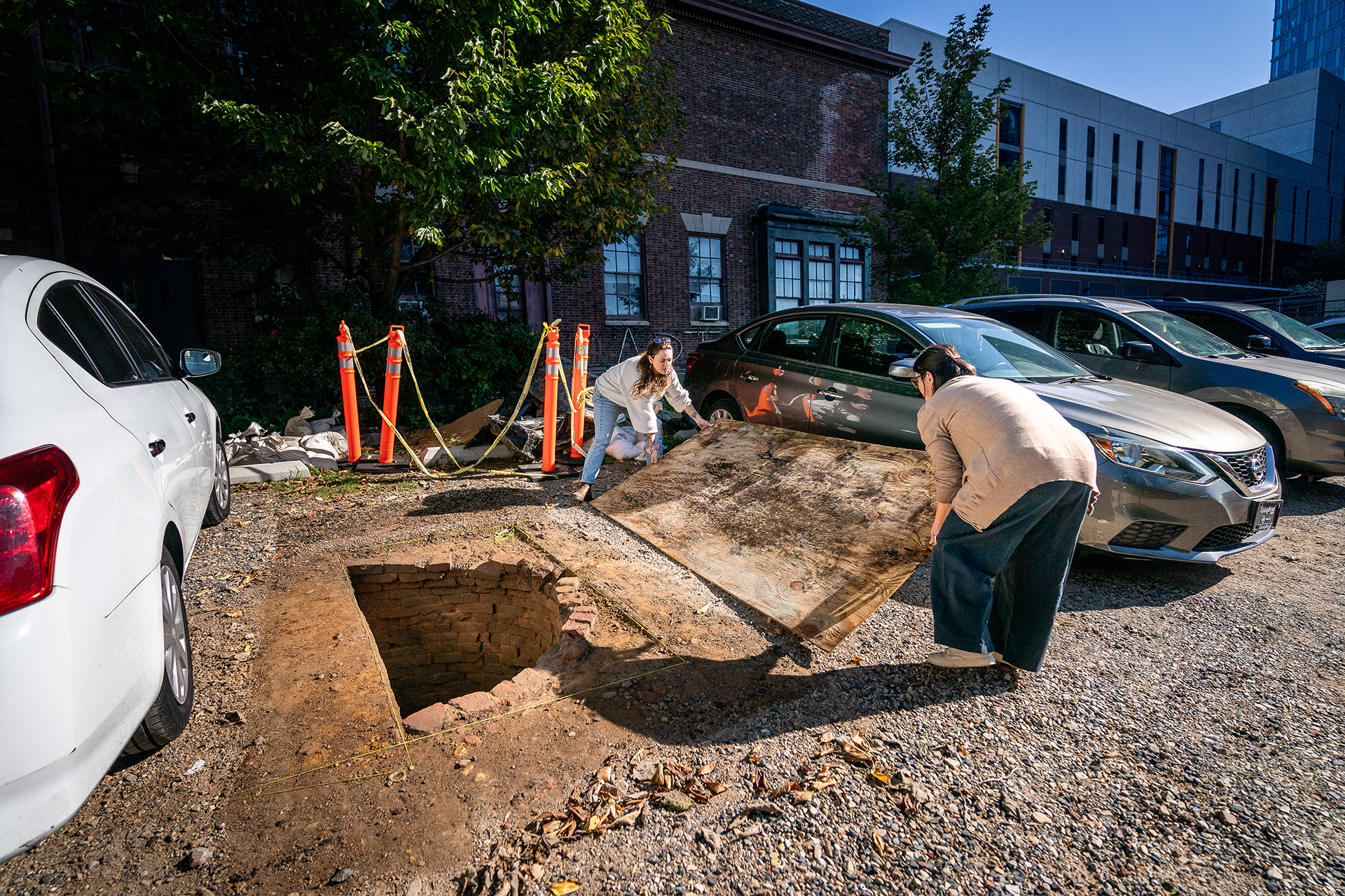
Heritage West staff used ground-penetrating radar and other techniques to find out what remained below the parking lot’s surface.
“We found Wissahickon schist [a kind of rock] one meter down that was probably part of a cellar wall,” Kassabaum says, adding that the excavation team put the dirt through fine screens to capture very small objects. “One of the coolest things we’ve found is a bunch of pencils made of soapstone sharpened into a pencil shape.” She associates the pencils and a lice comb the team unearthed with the school that once stood on the grounds. “We’ve found a fair amount of glass and ceramic pieces. We’ve also found a lot of clam shells. Clams were definitely consumed here.”
Archaeologically speaking, privies are amazing. Besides waste, all kinds of things go into them. They’re like a time capsule.”
— Sarah Linn, Penn Museum
The team also discovered bricks that were part of a privy.
“Archaeologically speaking, privies are amazing,” Linn says. “Besides waste, all kinds of things go into them. They’re like a time capsule.”
Palmer considers the excavation “a great idea” because it means that a small piece of the community will be salvaged. It will help keep the memory alive.
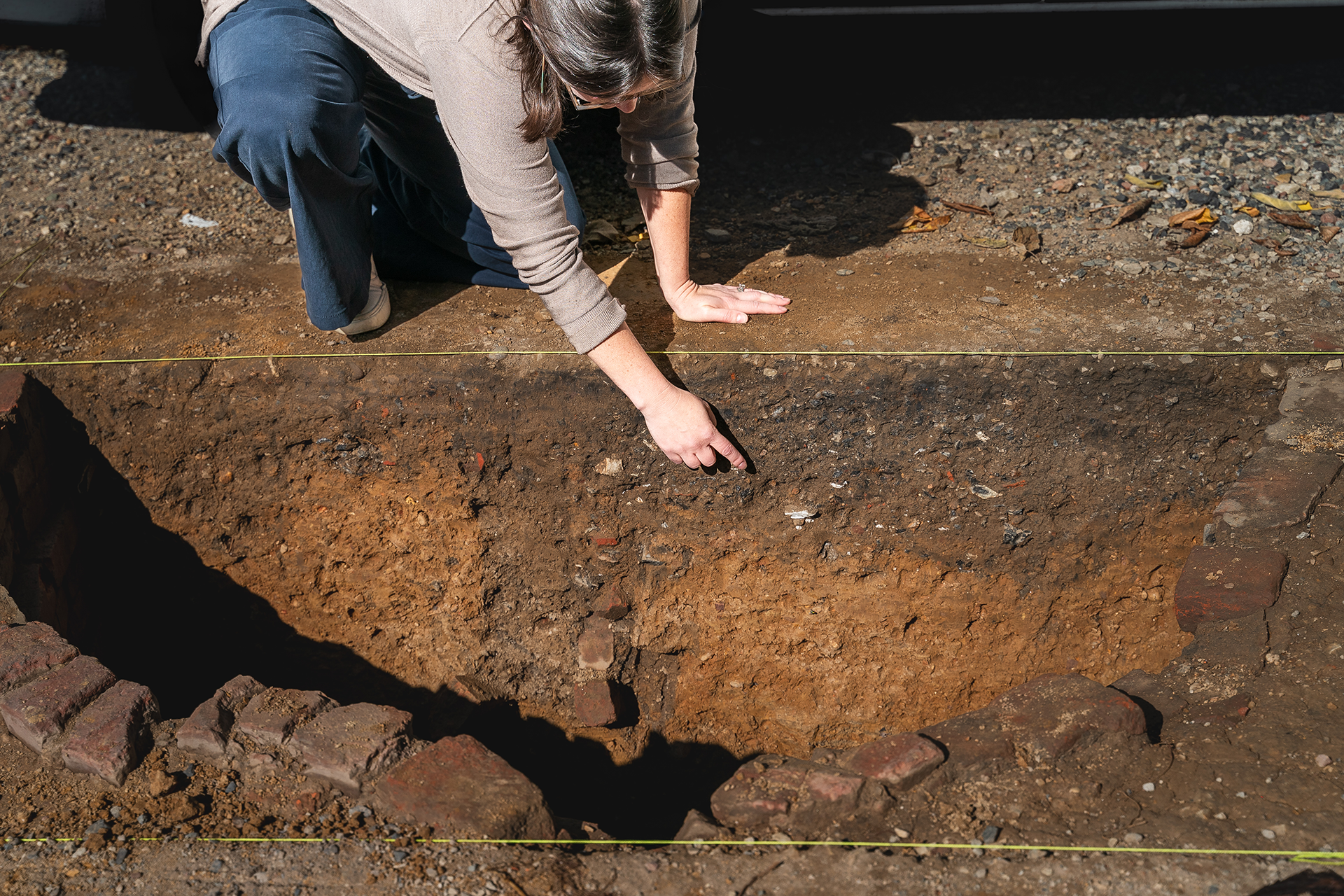
In addition to the Heritage West project, a range of people and groups have sought ways to honor the once-thriving community. The Black Bottom Tribe, whose members are former Black Bottom neighbors or their descendants, consists of 200 to 300 people. Events like a commemorative celebration on October 13 honored the group’s elders.
Plays by Billy Yalowitz — “Black Bottom Sketches” (1997) and “Taking a Stand” (1998) — also capture stories from the neighborhood. Yalowitz, a theater artist, former Penn professor and current Temple University Tyler School of Arts and Architecture professor, began work on the plays when he arrived at Penn as an adjunct in 1996.
“I was doing large scale oral history-based performances about Philadelphia neighborhoods … affected by institutional racism,” he says. “The plays were based on a series of story circles and oral history interviews that I did. The elders of the neighborhood were warm and generous in sharing their stories.”
Glen Muschio, associate professor in the Digital Media program at Drexel is creating a virtual reality tour of the Black Bottom. The tour is part of the Black Bottom Community Commemorative & Celebratory Project, which aims to raise awareness of the once-thriving Black Bottom, and to promote economic development, especially among the local African American community, Muschio says. The Black Bottom Tribe, Drexel and the University City Science Center are working together to develop the free GPS self-guided walking tour, accessible on personal cell phones.
Members of the Black Bottom Tribe also seek another form of recognition: a Pennsylvania historical marker at the corner of 36th and Market streets, Palmer says. But the planned plaque has sparked controversy.
“We want the marker to say, in part: ‘The West Philadelphia Corporation, at the request of the University of Pennsylvania, had the Black Bottom bulldozed,’” Palmer says.
In addition, former residents of the Black Bottom and their descendants seek reparations for the destruction of their homes. Their change.org petition, which has 1,035 signatures, asks Penn for an apology as well as assistance with housing, healthcare, education, employment and other measures.
Meanwhile, the excavation begun in August will continue into November.

More work on the project will take place next spring in Penn Museum’s North American archaeology lab. The archaeology team will wash the items found and create a digital catalog of them. Community partners helped with excavating, screening dirt and finding objects, Kassabaum says, and the team and the community will work together toward a co-curated public display.
“It may include an exhibition at the Penn Museum and one in the community,” Kassabaum says. “Physical objects make you think about the Black Bottom in a different way.”
On November 3, 2023, the excavation site located behind the CEC will be open to the public. For more information about the Black Bottom, visit heritagewestphl.org and blackbottomtribe.org


